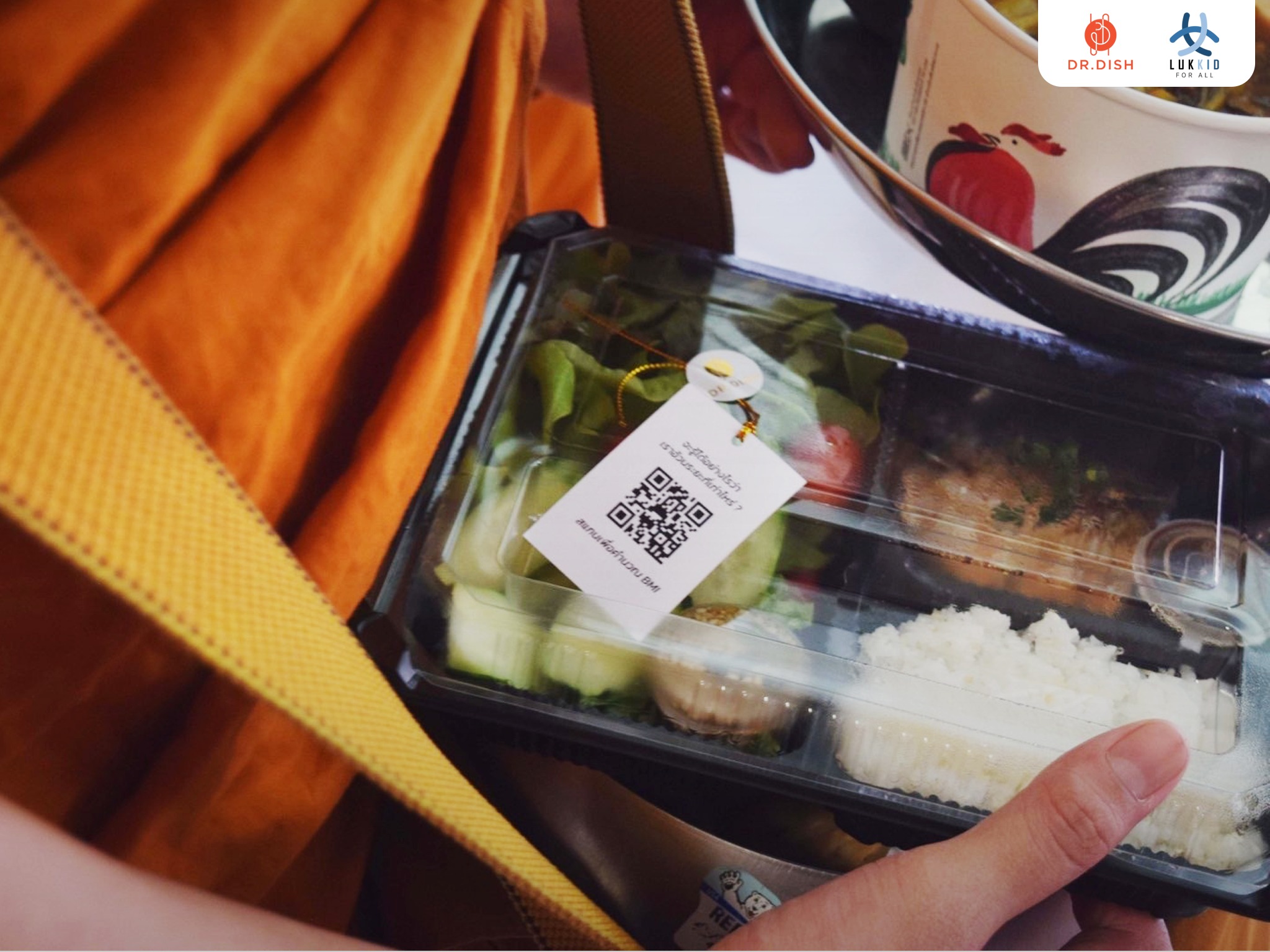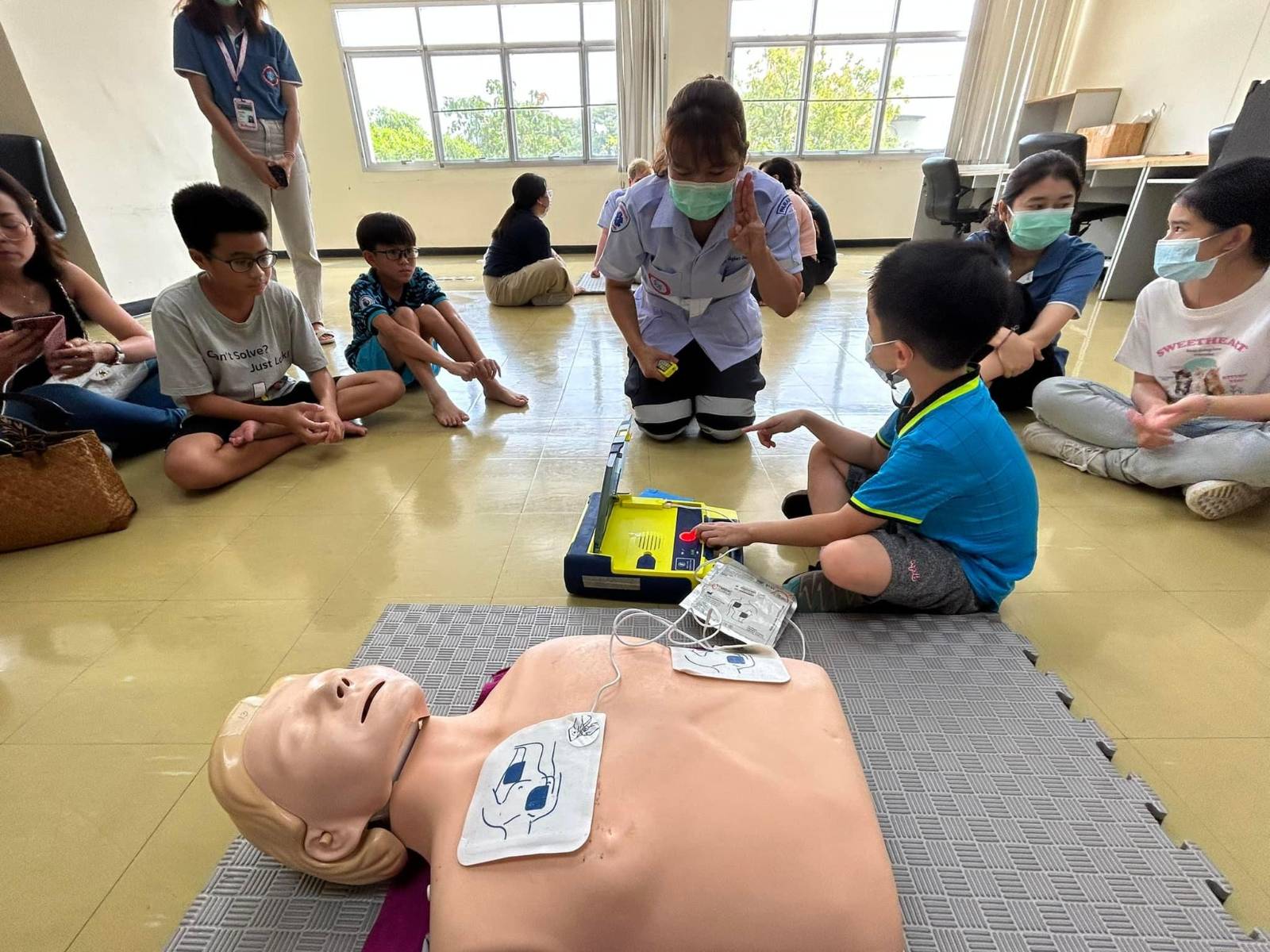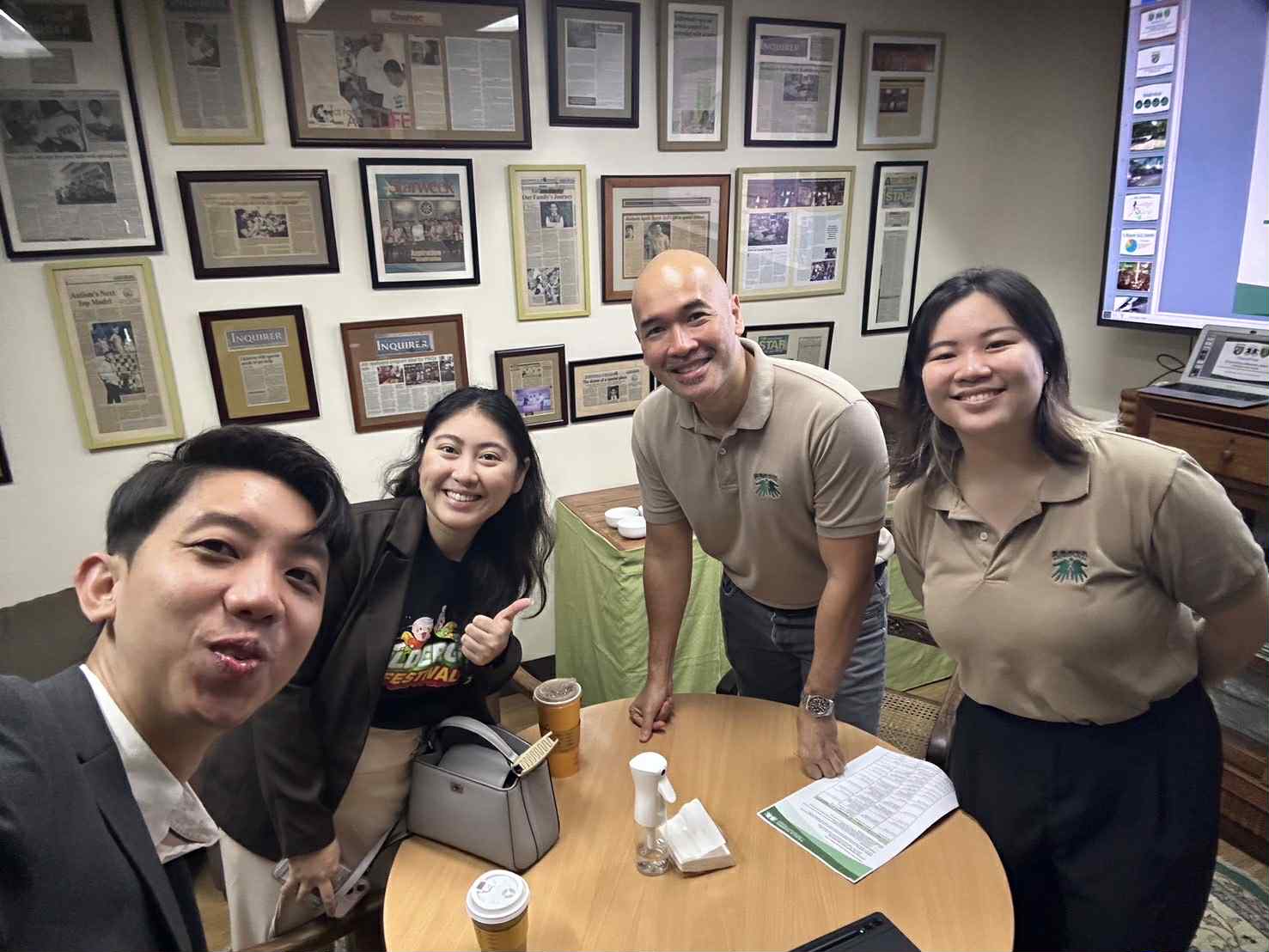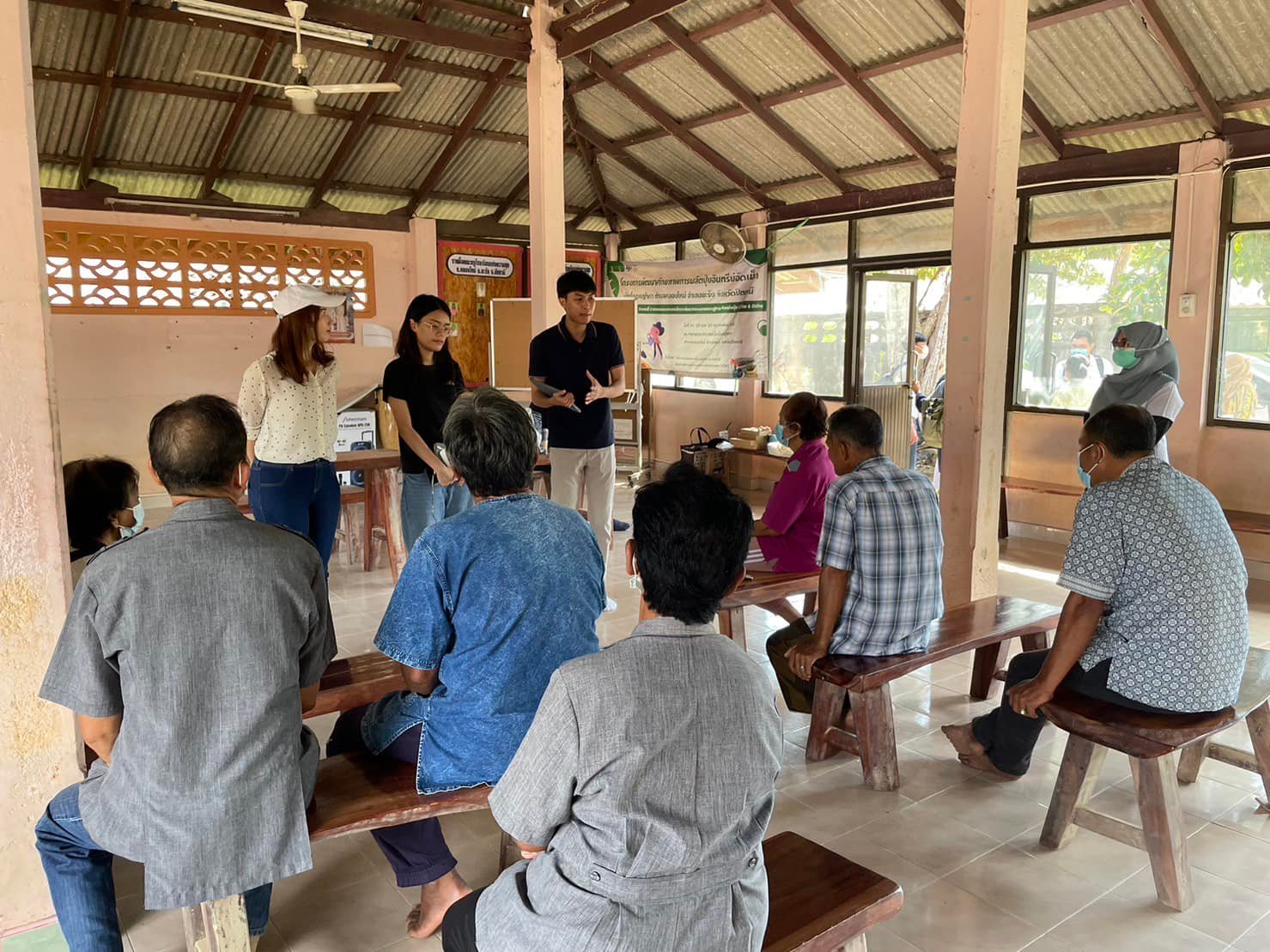Health-Private Sector Collaboration Model for Equity in Thailand and Southeast Asia
This story is part of a new series highlighting the work of Equity Initiative (EI) Fellows during the Community Building phase of the Equity Initiative program- a lifelong commitment to advancing health equity across Southeast Asia and China. Through CMB Foundation/EI grants like the Community Building Fund, Fellows lead innovative, locally grounded solutions that address pressing social and health challenges.
Pictured Above: Implementation partner Young Happy training senior citizens
|
Community Building Fund Project Snapshot: Health-Private Sector Collaboration Model for Equity in Thailand and SE Asia
|
When the team at Siriraj Hospital set out to improve the health of Thai monks—many of whom suffer from non-communicable linked to their unique lifestyle—they faced a challenge that couldn’t be solved by medicine alone. The monks depended entirely on almsgivers for their daily meals, leaving them with little control over their nutrition. To address this, the hospital partnered with Dr. Dish, a healthy food delivery platform, to co-create an online almsgiving service that allowed community members to donate nutritious meals directly. This unlikely collaboration became a model for how the private sector can play a more active role in advancing health equity.

Pictured Above: A monk olding food from Dr. Dish
In Thailand and Southeast Asia, businesses have often supported charitable causes through a top-down, monetary-driven model. While this traditional approach is helpful, it only scratches the surface of what’s possible. A more sustainable and transformative path lies in deeper engagement—where companies bring not just funds, but their full range of assets, from talent and skills to infrastructure and innovation, into partnerships that address the root causes of health inequity.
Equity Initiative Fellow May Sripatanaskul and her team at LUKKID—a Thai design consultancy known for using human-centered design to drive systems change—asked a simple but powerful question: what if we could transform this model to advance health equity? With support from the Community Building Fund, May launched a bold, three-year experiment to reimagine how healthcare systems and private sector organizations could collaborate—not through charity, but through co-creation. She says “Health equity cannot be achieved by the health sector alone. The private sector has incredible untapped potential to drive change, not just through funding, but by bringing their creativity, infrastructure, and problem-solving capabilities... we move from a donation mindset to a co-creation mindset, we start addressing the root causes of inequity, not just the symptoms.”
The initiative brought together hospitals and social enterprises in Thailand and the Philippines, using design thinking to facilitate new kinds of partnerships. Each project started with a simple but profound commitment: listen first. May’s team spent months conducting empathy interviews, mapping out the perspectives of healthcare workers, patients, and potential business partners before prototyping any solution.
The first pilot in Bangkok tackled the health of Thai monks. Another Bangkok-based collaboration addressed the cost barriers to CPR training by developing an award-winning, low-cost CPR training kit with eco-design firm Qualy.

Pictured Above: CPR demonstration as part of the education program
In Year 2, the team expanded beyond Bangkok to Pattani province in Thailand’s Deep South, where Yarang Hospital was working to improve stroke response times. Together with Ultron Asia, they developed a school-based health education program tailored to the local Muslim community.
Year 3 reached across borders. In partnership with the REACH Foundation in the Philippines and Thai social enterprise Young Happy, the project localized rehabilitation materials for children with disabilities—training Thai senior citizens to translate and help deliver community-based care.

Pictured Above: Meeting with implementation partners from ReachCBR Foundation, Philippines
Each collaboration not only produced tangible tools and programs, but also built trust between sectors that rarely work shoulder-to-shoulder. By emphasizing empathy, iteration, and mutual learning, the project created safe space for experimentation—even when things didn’t go perfectly.
In May’s words, “We chose ideas based on what people truly needed and what partners were excited to work on. Instead of jumping to solutions, we spent time listening to patients, healthcare staff, and businesses. The best ideas were the ones that everyone cared about and were willing to build together.”
To ensure that their lessons could benefit others, May’s team consolidated their insights into two practical resources: the Health Equity in Action Playbook and Toolbook. These open-source guides include templates, frameworks, and step-by-step processes to help others design cross-sector collaborations—from identifying the right challenge, to aligning incentives, to prototyping and testing.
The project also yielded important insights for future partnerships. Among them: secure the commitment of both parties early, spend more time defining the problem before jumping to solutions, and adapt strategies for transnational work.
For May, these lessons also redefined what leadership is to her, “I used to think leadership was about driving clarity and direction. However, through this project, I learned that leadership, especially in complex systems, is about holding space for uncertainty, listening deeply, and creating conditions where others can step into their leadership too. I had to get comfortable with things being messy, and trust the process of learning together. That shift, from directing to facilitating, was transformational for me.”
As Southeast Asia faces ever more complex health challenges—from aging societies to climate vulnerability—collaborations like these offer a hopeful path forward. By reimagining how business and health systems can partner, May’s work reminds us that equity isn’t just a healthcare goal, it’s a shared responsibility.
Call to action: To learn more about the Equity Initiative and how you can become part of this community, see here.
